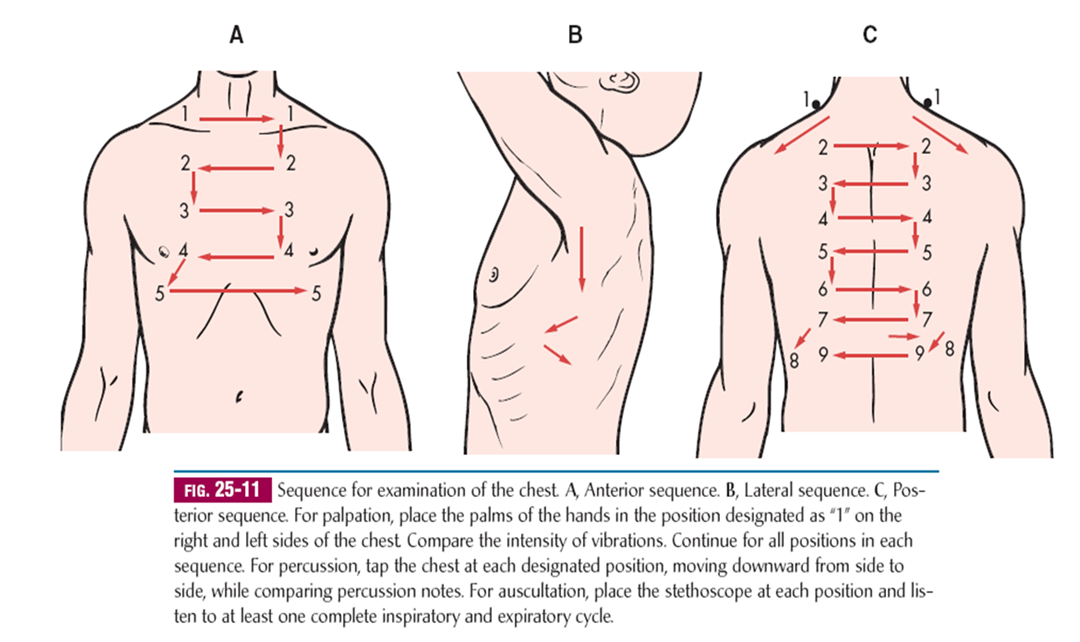
Method
Mediate
-
Pleximeter: distal inter-phalangeal joint of left middle finger
-
Plexor: right middle fingertip
-
Order: Up to down, anterior to posterior
- Should be done symmetrically and comparing the two sides.
- Supraclavicular area, then clavicles should be percussed directly to evaluate the upper lobes.
-
Liver dullness: of the upper edge starting at the 6th rib MCL, resonant note below this area indicates hyper-inflation (COPD and severe asthma)
-
Cardiac dullness: may be ↓ in hyperinflated chest.

Findings
Resonance: Normal
Hyperresonance: Emphysema , Pneumothorax
Tympany: Cavity or pneumothorax
Dullness: Pneumonia, atelectasis
Stony dullness: Pleural effusion

(cc) (COMB)
Other Notes
Percussion by - For percussion of the chest, it is usual to use the middle finger of the dominant hand to do this. - The clavicle is percussed directly, usually about a third of the way between the sternum and the acromium.
- The rest of the chest is percussed by placing the non-dominant hand on the chest and using the dominant middle finger to tap the other middle finger over the middle phalanx.
- Percuss over the lobes of the lung, front and back except that the middle lobe
- does not have surface anatomy on the back - Percuss over the heart, in hyperinflation of the chest, there is loss of cardiac dullness. - A hyper-resonant sound suggests hyperinflation or a pneumothorax. - A dull sound is easier to distinguish from normal, it may suggest collapse or consolidation, or a pleural effusion.